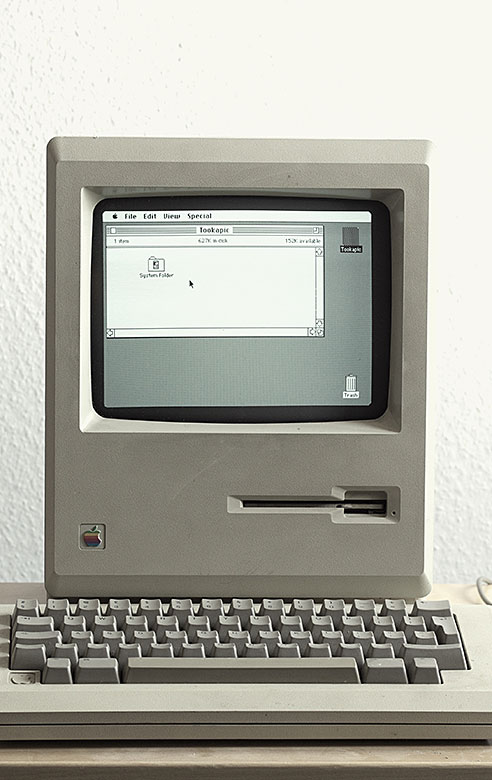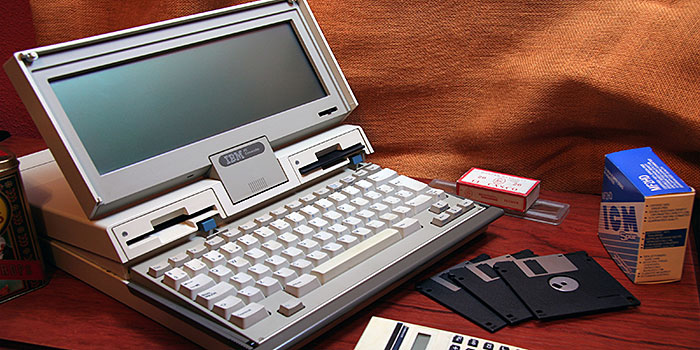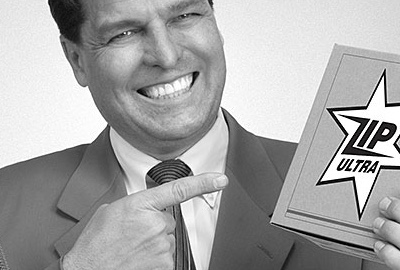



History of Personal Computer
- ArticlesandContent.com (CIRCA 2005)
- /
- Oct 8, 2021 (written 2005)
The PC, or personal computer, has revolutionized today’s society in several different ways.
When computers first came on the scene and started being used to help the government and businesses work more efficiently, this was seen as a major step forward in technology. At first, however, nobody dreamed that the computer would find its way into our homes, where it would help to change the way people communicated, sought information, purchased goods, and took care of everyday tasks. These days, PC’s are almost as commonplace in the home as televisions, and are used almost as frequently.
The computer history timeline that is the foundation for the history of the PC begins way back in the 1930’s - that is if we don’t count the abacus, which was used in China in ancient times. The first automated computer was invented by a man named Konrad Zuse, a German aircraft engineer who needed something that could help him calculate, and save in some sort of memory, complex math equations. This first primitive computer paved the way for more research into computer technology. By the late 1930’s and early 1940’s, computer technology had advanced to the point where computers could perform math calculations at amazing speeds, and store several of these calculations in a digital memory system. With the creation of the UNIVAC in the late 1940’s, the computer began to be used by government and businesses, mostly for math-related functions. The age of advanced technology was clearly underway. The computer history time line, when shown on a graph, reaches ever upward from it’s beginning, to the invention of the personal computer, the handheld computer, the Internet, and beyond.
Computer History and Development
When Konrad Zuse developed his automated calculating machine, which he named the Z1, he had no idea of the revolution in technology that he had launched. Zuse’s automated calculation machine is considered to be the first primitive binary computer. Using binary digital technology, Zuse’s machine could perform complex math functions, and store them in digital memory. A few years later, Iowa State University student Clifford Berry and his professor, John Atanosoff developed a digital computer that performed math calculations using a binary system. This computer could separate computing functions from memory functions, and its memory could regenerate over and over. This was a vast improvement over Zuse’s first automated calculating machines. The UNIVAC computer was created after trial, error, and near bankruptcy by John Mauchly and Presper Eckert, and was one of the first commercially used computers. Large and cumbersome, the Univac took up an entire room, but it was heralded as a machine that positively changed the way many companies and government agencies were able to do business. As time went on, computers were made smaller, and much more efficient. Computer development was a constantly ongoing process.
“You could say I was too lazy to calculate, so I invented the computer.”
Tracing the history of the computer is a fascinating task; one that is filled with surprising achievements and giant technological leaps forward. Following this history shows one how computers have changed society in a relatively short amount of time. What computer history shows us is that the invention of the computer made it possible to make many more technological advances – ones that may not have been possible without the help of computers.
PC History
PC history is one branch of computer history that takes on a life of its own. When the personal computer started to show up on the scene, it opened doors for people that they had not even known were there. Suddenly, computers were no longer those complex machines that only business technicians could run and use – they were available to use in the home, and their functions were relatively easy to learn and master.
In the late 1960’s and early 1970’s, a man named Ed Roberts was running an electronic device assembly kit business. Roberts dealt mainly in calculator kits, and when calculators started being sold by large manufacturers, fully assembled and at a much lower price, Roberts’ business began to fail. Desperately searching for a new idea to keep his business from going into bankruptcy, Roberts began to work on a computer assembly kit that could be sold to consumers for use in their homes. He named this computer kit, and subsequently the assembled computer, the Altair. Roberts was amazed by the response he received after he put the kit on the market, and he was soon having a hard time keeping up with the demand. The public was clearly ready for home computers, and other manufacturers began to see this as well. The age of the personal computer had begun, and everyone was jumping on the bandwagon.
History of Microsoft Windows
Upon hearing of and purchasing a couple of the Altairs, two computer processors named Bill Gates and Paul Allen decided to develop software programs for it. Gates and Allen were successful with these software programs, which allowed the Altair to perform many more tasks than it originally could. Bill Gates used his success to go on to create the company Microsoft, which Paul Allen later joined. The Microsoft Corporation developed MS-DOS, an operating system for computers that made performing functions even easier, and from there it developed Microsoft Windows, a graphic interface operating system that made computers even more user-friendly.
Windows History
Microsoft Windows started with the graphic interface operation called Windows 3.0, which could be installed in the computer using a series of floppy computer disks. Installation was easy and very user-friendly, and once it was installed, computer users could navigate through their computer and their software programs with relative ease. As soon as Windows 3.0 was created, however, research on and development of the next edition of Microsoft Windows was underway. Microsoft Windows became the major operating system for all personal computers, except for Macintosh models. Over the years, Microsoft developed Windows 3.1 for personal computer use, Windows NT, which was mainly for business use, then Windows 95, Windows NT 4.0, and Windows 98. Microsoft went on to develop the Windows programs that are commonly used today: Windows 2000, Windows ME, and different versions of an integrated program called Windows XP.
The history of the PC and the software programs that can be run on it is on a time line that really has no end in sight. With all of the functions that today’s personal computers and software programs can perform, there is still research into computer technology that will continue to produce even more amazing products.





